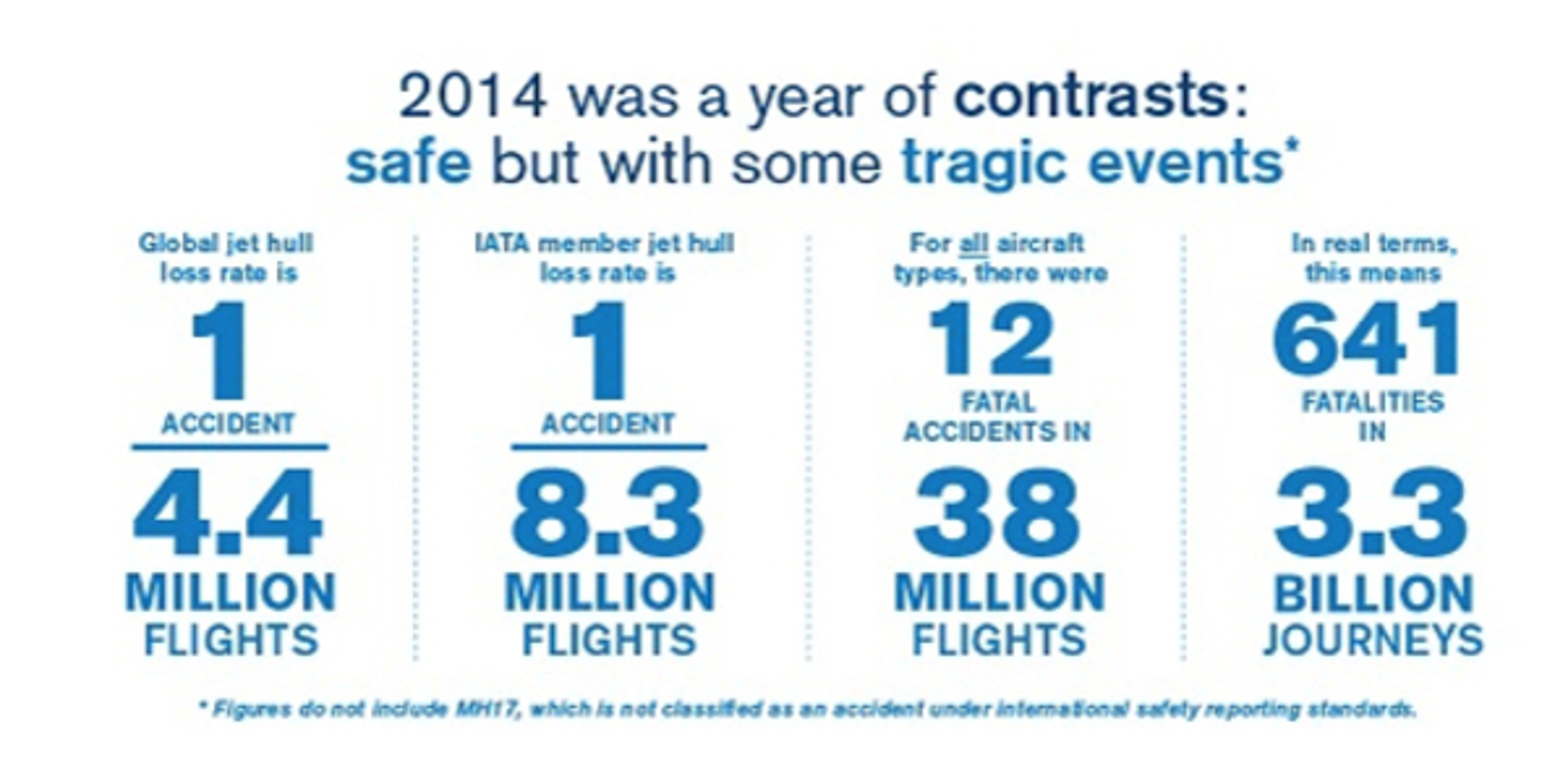Kenya Airways and South African Airlines planes at sunset in Nairobi's Jomo Kenyatta International Airport.
Coming off the back of a year that saw extraordinary aviation disasters dominate world headlines, it would be hard to find good news, but data from a leading industry body shows that in 2014 sub-Saharan Africa airlines had zero jet hull losses. It was the biggest improvement of all regions, even if from a low base.
The region reported a rate of zero jet hull losses (write-offs) per 1-million flights, from 2.22 in 2013 and 4.63 in 2012, the International Air Transport Association (IATA) said.
This helped bring down the global accident rate to 0.23, the equivalent of one accident for every 4.4-million global flights; and the lowest rate in history, according to IATA.
This was an improvement on 2013, when the global rate stood at 0.41, or an accident in every 2.4-million flights, and also on the five year rate of 0.58 hull loss accidents for every million worldwide flights between 2009 and 2013.
In that period, Africa’s loss rate averaged 6.83, propped by the 14.83 rate recorded in 2009, suggesting regional measures to improve what has until now been a dreadful safety record are bearing rich fruit.
IATA tends to be big on safety, and chief executive and director general Tony Tyler said the association would retain its focus on making flying safer, especially in the wake of the extraordinary losses of MH370 and MH17, which he termed unacceptable.
When only IATA members, who number about 251 major carriers who are responsible for 84% of global traffic, are factored in, the loss rate dropped to 0.12, or one accident for every 8.3-million flights.
“Governments and industry have come together to find ways to reduce the risk of over-flying conflict zones. This includes better sharing of critical information about security risks to civil aviation,” Tyler said as IATA released its 2014 commercial safety performance report.

Safety
The body has a stringent global safety programme known as the Operational Safety Audit (IOSA) to which all current 396 members are required to comply with certain standards or be deregistered. Some 60 airlines in Africa, including major players such as South African Airways, Kenya Airways, Ethiopian and Royal Air Maroc, are listed, though only 27 are from sub-Saharan Africa.
The African number is however a progressive increase from the 39 that were listed in 2013.
IATA notes that the total accident rate—both turbojet and turboprop—was more than three times worse for non-IOSA carriers, and in Africa, five.
IATA will also increasingly tap into data to increase safety, its chief said. “Future safety gains will come increasingly from analysing data from the more than 38-million flights that operate safely every year, rather than just the handful of flights where something goes wrong.”
But for every bit of good news there is a damper—sub-Saharan Africa has the most losses of turboprops (slower but fuel-efficient aircraft), at a rate of 14.13 for every million flights, against a global average of 2.30.
“Safety continues to be a challenge for Africa. The fact that the region experienced no jet hull loss accidents last year is real progress, in line with the objectives of the Abuja Declaration. However, the poor performance on turboprops demonstrates that significant challenges remain,” said Tyler, urging African governments to accelerate implementation of global safety standards.
These include the Universal Safety Oversight Program run under UN agency the International Civil Aviation Organisation (ICAO) since 1999.
There is however tangible movement in that region: from 2016 African states will not issue an air operator’s certificate unless a carrier has met IOSA requirements.
This is an outcome of the AU-driven Africa Strategic Improvement Action Plan, which anchors the Abuja Declaration on Aviation Safety in Africa endorsed by African states last year that seeks to address the continent’s air safety deficiencies, including those of a regulatory nature.
It is envisaged that by 2015 all carriers on the continent will have signed up, helping protect an industry that supports close to 7-million jobs on the continent, and contributes $67.8-billion to Africa’s GDP. – Lee Mwiti
This article first appeared on mgafrica.com